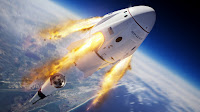Boeing Readies Starliner For Launch

Looking To Launch Starliner First Un-crewed, Then Crewed Source: Boeing Spaceship with Checkered Past Boeing has built the Starliner, a next generation spacecraft, that's designed to ferry astronauts to and from the International Space Station (ISS). It is an alternative vehicle to the highly successful SpaceX Crew Dragon that brought two astronauts back and forth to the ISS this past summer. The Starliner has been plagued with development problems, test failures and schedule slippages. Now it has lost its astronaut Commander Chris Ferguson. Ferguson is an engineer who helped Boeing develop the space vehicle. December 2019 Test Starliner has experienced a rocky road to development. In December 2019, during an un-crewed flight, s...


